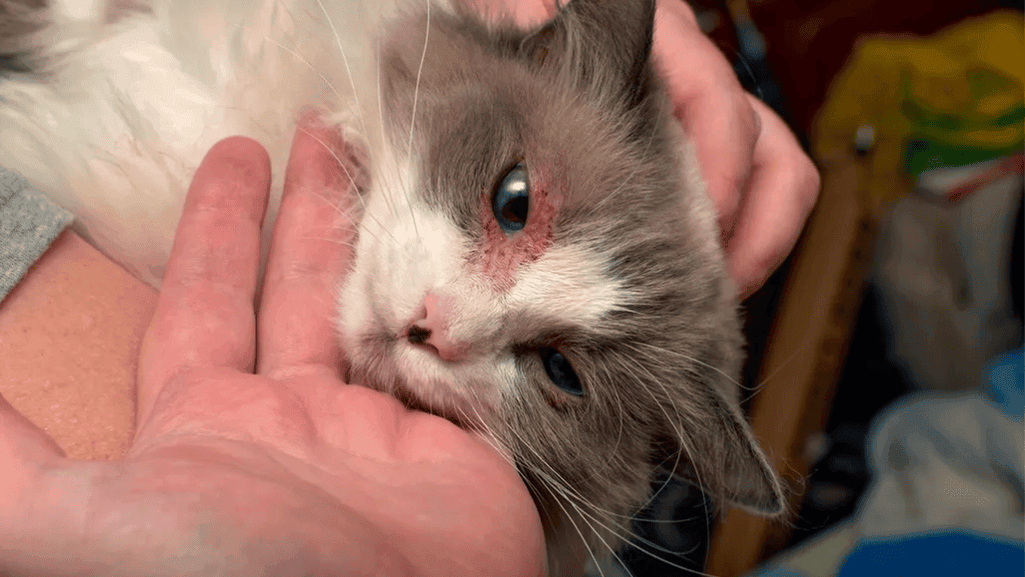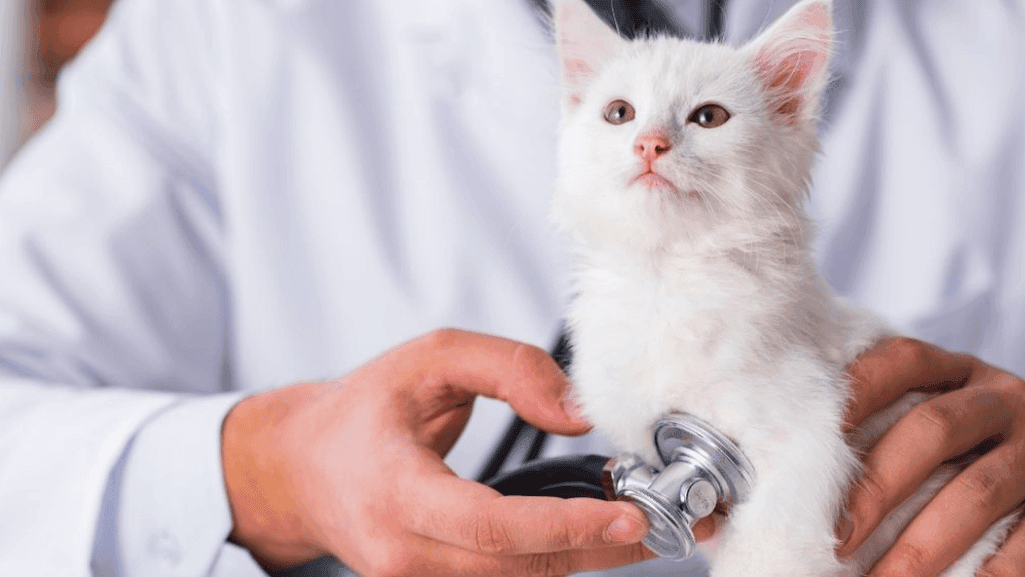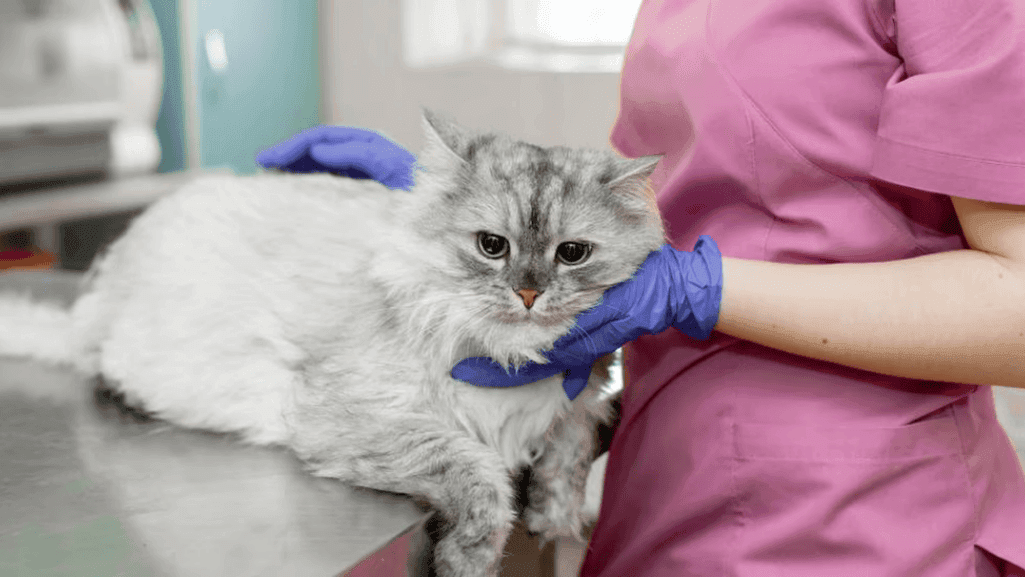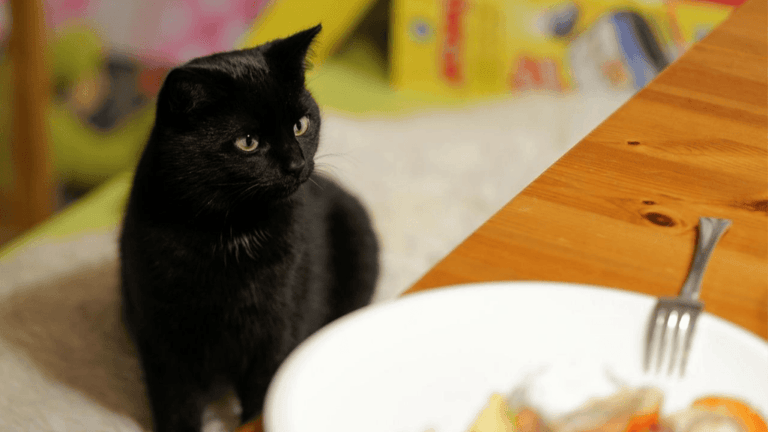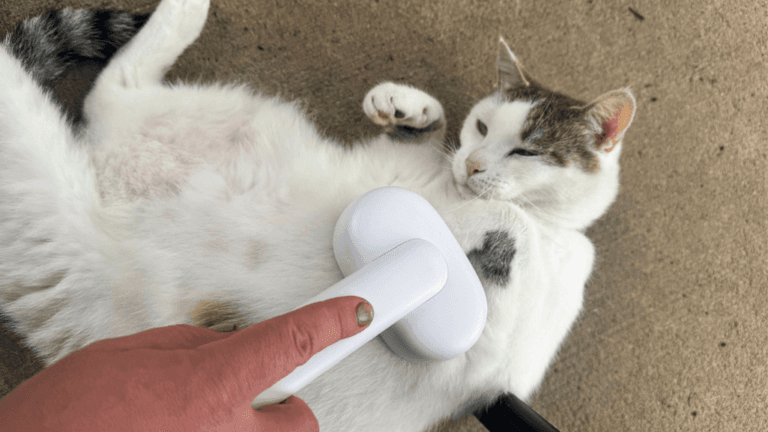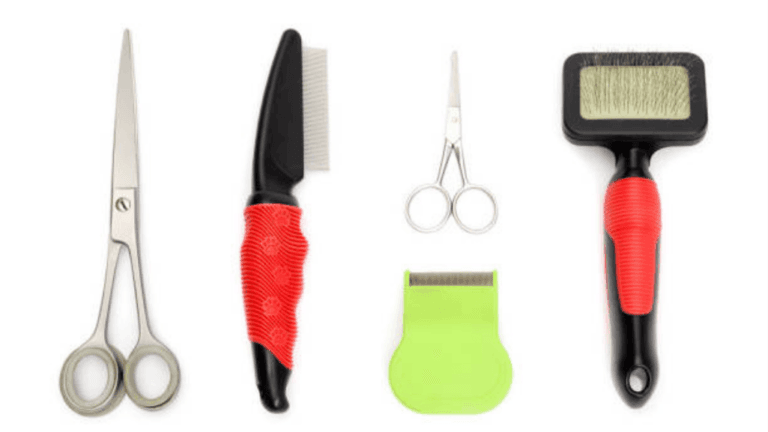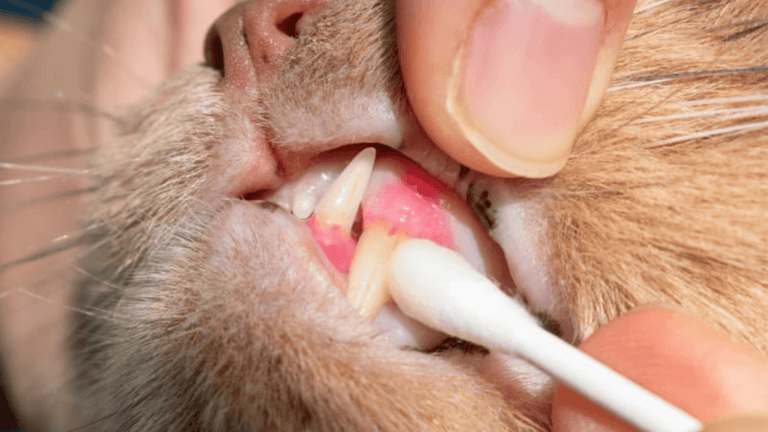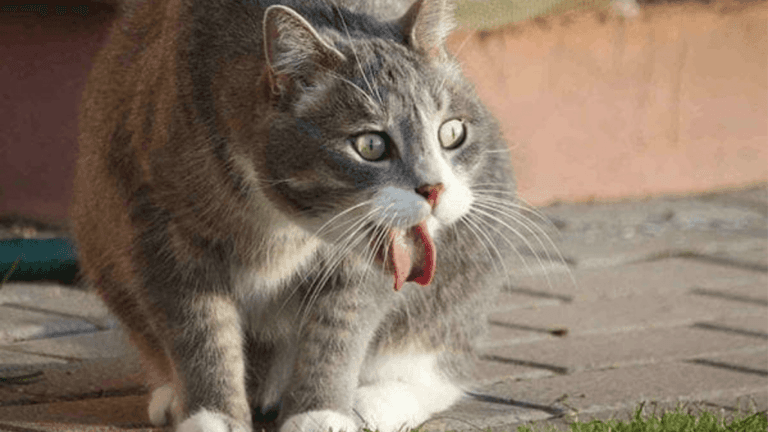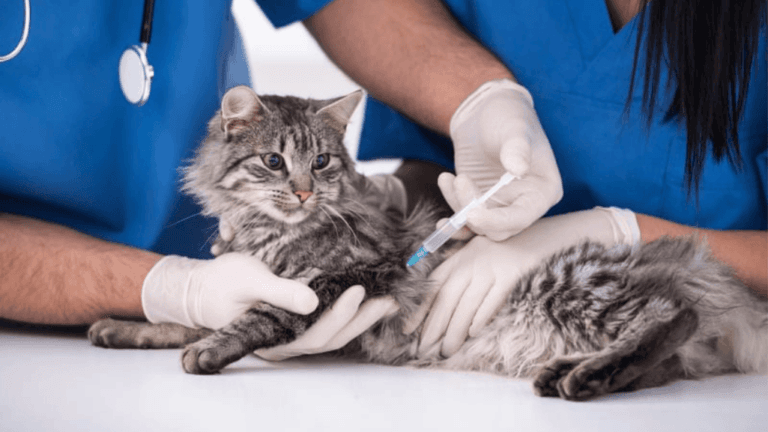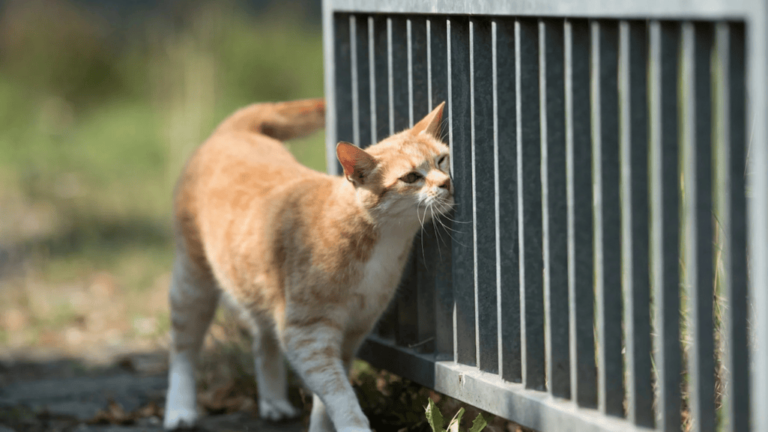For the nearly 40 million households in the United States with pet cats, knowing about feline health is crucial. It’s not just about loving these animals; it’s about being aware of risks and responsibilities. By learning about cat infections symptoms, you protect your pet and your family.
Scratches can lead to infections in 20-80% of cases. Diseases like Toxoplasma and Giardia can spread through feces. So, it’s important to take steps to treat and prevent infections in cats.
Regular vet visits are key to keeping your cat healthy. They help with preventive care, like vaccinations against rabies and feline distemper. Keeping your cat indoors at night and preventing ticks also helps reduce health risks.
Being aware and taking preventive steps can lessen the burden on caregivers. For example, the feline leukemia virus can lead to lymphosarcoma in cats. This is a big concern, as it affects 30% of cat cancer cases. Simple actions like washing your hands after handling your cat or their supplies can make a big difference.
Key Takeaways
- Recognize the importance of monitoring for cat infections symptoms and seeking timely treatment for cat infections.
- Implementing cat health tips, such as regular nail trimming and proper litter box hygiene, minimizes infection risks.
- Adhering to a consistent vaccination schedule is a fundamental feline wellness strategy.
- Maintain good hygiene, and always wash hands after interacting with cats or their belongings to prevent zoonotic diseases.
- Understand that vaccinations, indoor housing at night, and tick prevention are all part of a responsible feline health protocol.
Understanding the Risks of Cat Infections to Humans
Cats bring joy and companionship, but they can also carry diseases that affect humans. Knowing how to manage these risks helps keep both cats and humans safe. This includes learning about diseases cats can spread and how to prevent them.
The Zoonotic Potential of Cats
Cats can carry pathogens that can infect humans. Bacteria and parasites like Capnocytophaga canimorsus and Pasteurella multocida are found in their mouths. Handling cats carefully and treating bites and scratches quickly is important to prevent infections.
Infections like cat scratch disease, caused by Bartonella henselae, show how important it is to be cautious. Simple interactions with cats can lead to health problems if we don’t take precautions.
Rabies is a severe disease that cats can spread. In North America, cats are often the first animals to show signs of rabies. This highlights the need for up-to-date vaccinations and prevention measures, especially where wildlife is common.
High-Risk Populations for Infections
Some people are more likely to get sick from animals, including cats. Those with weakened immune systems, like people with AIDS/HIV or those on chemotherapy, need to be extra careful. Pregnant women, the elderly, and children are also at higher risk from cat-borne diseases.
| Disease/Condition | Carrier | At Risk Population |
|---|---|---|
| Cat Scratch Disease (Bartonella henselae) | Cats | Individuals with weakened immune systems, Children |
| Rabies | Cats | All populations, Vaccination required by law in some states |
| Hookworm and Roundworm Infections | Cat feces | Children, Gardeners, Outdoor Workers |
| Toxoplasmosis | Cats | Pregnant Women and Immunocompromised Individuals |
By understanding these risks and taking preventive steps, we can reduce the chance of cats spreading infections to humans. Regular vet visits, good hygiene, and vaccinations are key to keeping everyone safe.
Identifying Common Cat Illnesses and Their Symptoms
Good feline health care means spotting illness signs early. Knowing the symptoms of common cat illnesses helps owners get vet help fast. This can greatly improve their pet’s health.
Respiratory Infections in Felines
Feline respiratory infections are common and serious. They can be caused by viruses like feline herpes and calicivirus. Symptoms include sneezing, stuffy nose, fever, and loss of appetite.
Seeing these signs means it’s time to see the vet. They can help manage the infection and stop it from getting worse.
Gastrointestinal Issues and Parasitic Infections
Parasites like roundworms can cause big problems in cats. They lead to diarrhea, vomiting, and weight loss. These signs often mean a cat has a parasite like Toxoplasma or Giardia.
These parasites are tough and can cause severe infections. It’s important to catch these issues early to help your cat.
Feline Skin Infections and Allergies
Cat skin infections and allergies can cause red, irritated skin and hair loss. They might be from bacteria or parasites like fleas. Allergies can also cause skin problems, from food or the environment.
Spotting these problems early is key. Quick treatment can stop bigger health issues and help your cat live longer and healthier.
| Condition | Prevalence | Common Symptoms |
|---|---|---|
| Feline Respiratory Infections | Common, specific prevalence rate needed | Sneezing, nasal congestion, fever, reduced appetite |
| Gastrointestinal Parasites | 2%-3% affected by Feline Leukemia virus | Diarrhea, vomiting, weight loss |
| Feline Skin Conditions | Various, dependent on underlying cause | Red skin, hair loss, lesions |
The Role of Vaccination in Feline Disease Prevention
Vaccination is key in keeping cats safe from diseases like feline leukemia virus, rabies, and feline viral infections. It’s not just for the cat’s health but also to stop diseases from spreading. This helps keep the whole pet community safe.
Essential Feline Vaccines
The American Association of Feline Practitioners (AAFP) says all cats need certain vaccines. These include shots for panleukopenia, herpesvirus, calicivirus, rabies virus, and feline leukemia virus. These vaccines fight off deadly viruses that can shorten a cat’s life.
The feline distemper vaccine is especially important. It protects against panleukopenia, a very contagious and deadly disease. Also, about 50% of cats with Feline Leukemia Virus (FeLV) die within two and a half years. So, getting vaccinated against FeLV is very important.
Schedule and Importance of Booster Shots
It’s important to stick to a vaccination schedule and get booster shots. Kittens start getting their shots at 6-8 weeks old. They need a series of shots until they’re 16-20 weeks old. This is because their mom’s antibodies wear off at different times.
Adult cats also need booster shots, often every year. These shots keep them safe from diseases like rabies and feline distemper. A vet can make a plan based on the cat’s age, health, and risk of getting sick.
By following the AAFP’s guidelines, pet owners can keep their cats healthy. This means their cats will live longer and happier lives.
Cats and Infections: Taking Precautionary Measures
Feline health is as important as human health, especially with the close bond between cats and their owners. Preventing cat infections is key to cat health and infections and stopping diseases from spreading to humans. Knowing about cat infection prevention means understanding common and rare diseases that can affect cats and people.
Here are some important feline health tips to keep your cat and family safe:
- Regular Veterinary Checks: Make sure your cat sees a vet often to catch infections early.
- Vaccinations: Keep up with your cat’s shots to prevent diseases like feline flu, which can harm both cats and humans.
- Hygiene Practices: Wash your hands often after touching your cat, especially after handling their saliva or litter box.
| Infection | Prevalence in Cats | Impact on Human Health |
|---|---|---|
| Cat Scratch Disease (CSD) | Approximately 40% infected with Bartonella henselae | Can cause extensive lymph node swelling |
| Pasteurella multocida infection | 70-90% carry in their mouths | Requires medical attention after cat bites |
| Salmonella | Contracted via contaminated feces | Can lead to diarrhea, fever, and pain |
| Ringworm | Common fungal infection | Causes itchy, scaly patches on human skin |
| Toxoplasmosis | Caused by Toxoplasma gondii | Risks to pregnant women and the immunocompromised |
By taking daily preventative precautions, you can lower the risk of these diseases in your family. Working with your vet’s advice is key. For more on handling infections and cat infection prevention, check out resources on feline health tips. Understanding cat health and infections shows the importance of being proactive in pet care. It ensures a safe, healthy space for both cats and their human friends.
Professional Feline Veterinary Care: When to Seek Help
Knowing when to get feline veterinary care is key for your cat’s health. Cats often hide pain, so it’s important to watch for signs of infection or behavior changes. Regular vet visits and quick medical help when needed can greatly improve your cat’s life.
Emergency situations need quick cat veterinary care. Recognizing these signs can save your pet’s life.
Signs of Emergency Medical Conditions
Signs like urinary obstructions and serious trauma need immediate feline medical attention. These are top emergencies for cats. Also, look out for severe tiredness, changes in eating or drinking, or unexplained weight loss. These could mean serious problems like kidney failure, diabetes, or tumors.
The Importance of Regular Vet Checkups
Regular vet visits are crucial for catching health issues early. Cats need vet exams just like humans do. They should see the vet twice a year, especially as they get older.
| Condition | Signs to Watch For | Recommended Action |
|---|---|---|
| Urinary Obstruction | Difficulty urinating, pain, lethargy | Seek immediate veterinary help |
| Kidney Failure | Weight loss, changes in thirst and urination | Schedule a vet checkup |
| Dental Diseases | Bad breath, drooling, difficulty eating | Veterinary dental check every 1-2 years |
| Diabetes | Increased thirst, urination, weight loss | Consult your vet for diet and medication |
For more on cat care, check out this resource.
Managing Cat Health Issues with Proper Nutrition
A holistic approach to cat health care highlights the importance of nutrition. Understanding how diet affects the cat immune system is key. It’s the first step in managing health issues.
Diet’s Impact on the Feline Immune System
A good diet strengthens the cat immune system. It helps fight off diseases and reduces the risk of getting sick. High-quality protein in cat food is crucial for immune health.
Choosing the Right Food for Your Cat’s Health
Choosing the right cat food is important. It depends on the cat’s age, health, and nutritional needs. Talking to a vet can help find the best food for your cat’s health.
Here’s a detailed breakdown of dietary recommendations for optimal feline health:
| Type of Food | Protein | Fat | Water | Key Nutrients |
|---|---|---|---|---|
| Kitten Food | High | High | Varies | Calories, proteins, fats |
| Adult Cat Dry Food | Moderate | Low to moderate | 10%-12% | Lower calories, more plant-based proteins |
| Adult Cat Wet Food | High | Moderate | 70%-80% | Animal-based proteins, hydration |
| Senior Cat Food | High | Low to moderate | Varies | More protein, calcium, essential nutrients |
This table shows the need for customized diets for cats at different stages of life. It ensures they get the right nutrition. This boosts their immune system and helps manage health issues.
Preventing Infections in Cats with Good Hygiene Practices
Keeping a clean environment is key to stopping the spread of cat illnesses. It keeps both cats and their owners healthy. By following good cat care practices, you protect your pet and prevent diseases from spreading to people.
Litter Box Maintenance and Hygiene
Keeping the litter box clean is a big part of cat care. A clean box stops bacteria and viruses that cause sickness. Scoop the litter daily and clean it with hot water and soap weekly. Wear gloves and wash your hands after to avoid getting sick.
Cleaning and Disinfection of Cat Areas
Cleaning where cats eat, sleep, and play is also important. Disinfecting these spots gets rid of harmful germs. Use pet-safe cleaners to keep your cat safe from harmful chemicals.
Preventing cat illnesses is more than just cleaning. It’s about a lifestyle of constant care and attention. Regular vet visits and keeping up with vaccinations are crucial.
- Regular disinfection of cat’s play areas and sleeping spots.
- Daily removal of waste from litter boxes followed by weekly deep cleaning.
- Isolation of ill pets to prevent the spread of infectious diseases to other household animals.
- Immediate veterinary care for symptoms indicative of infectious diseases.
Treating Cat Infections: Therapies and Medications
When treating cat infections, a mix of treatments is often needed. This includes antibiotics for bacterial infections and special care for viral ones. We’ll look at the treatments and home care that help cats get better.
Antibiotics and Their Use in Feline Care
Vets use different antibiotics to fight bacterial infections in cats. These antibiotics target various infections. Here’s a list of common ones:
| Antibiotic | Common Usage | Potential Side Effects |
|---|---|---|
| Amoxicillin | Respiratory and urinary tract infections | Nausea, vomiting, diarrhea |
| Doxycycline | Chlamydia felis infections | Vomiting, nausea, diarrhea |
| Cephalexin | Skin, bone, respiratory and urinary infections | Lethargy, vomiting, diarrhea |
| Metronidazole | GI tract issues, anaerobic infections | Neurotoxicity (rare), lethargy, loss of appetite |
| Enrofloxacin | Bladder, respiratory, skin infections | Tendinitis, cartilage damage (especially in young animals) |
| Orbifloxacin | Skin and urinary tract infections | Depression, lethargy, seizures (rare) |
| Always consult a veterinarian for the appropriate dosage and monitoring of side effects. | ||
Home Care Strategies for Sick Cats
Home care is key to helping sick cats feel better. It includes a quiet place to rest, plenty of water, and food. It’s also important to watch their temperature and behavior.
Make sure to follow the vet’s instructions for medication. Grooming should be gentle to avoid stressing them out.
Understanding how to treat cat infections helps them recover faster. By combining medical treatment with home care, we can keep our pets healthy and happy.
Safeguarding Indoor and Outdoor Cats from Infectious Diseases
To keep indoor and outdoor cats safe from diseases, we need to know the risks and how to prevent them. The right steps to keep cats healthy vary based on whether they go outside or stay inside. It’s all about feline safety and health.
Environmental Risks for Outdoor Cats
Outdoor cats are more likely to get sick from contagious diseases in cats and parasites. They also face harsh weather. To protect them, we need to give them regular shots and prevent parasites. This helps fight off diseases like rabies and feline leukemia virus.
Creating a Safe Indoor Environment
For indoor cats, keeping them healthy means controlling their environment. We need to keep fleas and ticks out. A safe, clean space is key for indoor cat health. Regular vet visits are also important for feline safety and to prevent feline leukemia virus.
| Disease | Risk Factor for Outdoor Cats | Common Prevention Measures |
|---|---|---|
| Feline Leukemia Virus (FeLV) | High – Close contact with infected cats | Vaccination, maintaining enclosed spaces |
| Rabies | High – Possible interaction with infected wildlife | Vaccination, avoiding wildlife contact |
| Feline Immunodeficiency Virus (FIV) | Moderate – Spread primarily through deep bite wounds | Limited exposure to unknown cats, vaccination |
| Toxoplasmosis | Low – Primarily from hunting | Indoor living, avoiding raw meat |
| Internal Parasites (e.g., roundworms) | High – Contact with contaminated soil | Regular deworming, hygiene maintenance |
Understanding the differences between outdoor cat care and indoor cat health is crucial. By taking the right steps, we can greatly reduce health risks. This helps our cats live longer, happier lives.
Conclusion
In closing, keeping a close eye on your cat’s health and strict hygiene are key to preventing cat diseases. These steps are not just for your cat’s health but also to protect others from diseases that can spread from animals to humans. For example, the high rate of Feline calicivirus in shelters shows how important it is to act fast.
Whether you have many cats or just one, taking a strict approach to their health is essential. This means keeping them safe from diseases like Feline enteric coronavirus, which spreads quickly in crowded places. Regular vet visits and the right food are as important as they are for keeping the peace in your home.
Working together to care for our pets and staying informed is crucial for a happy life with them. As pet owners, we must make these practices a part of our daily lives. With the right knowledge and tools, we can keep our cats healthy and contribute to a healthier community for everyone.

